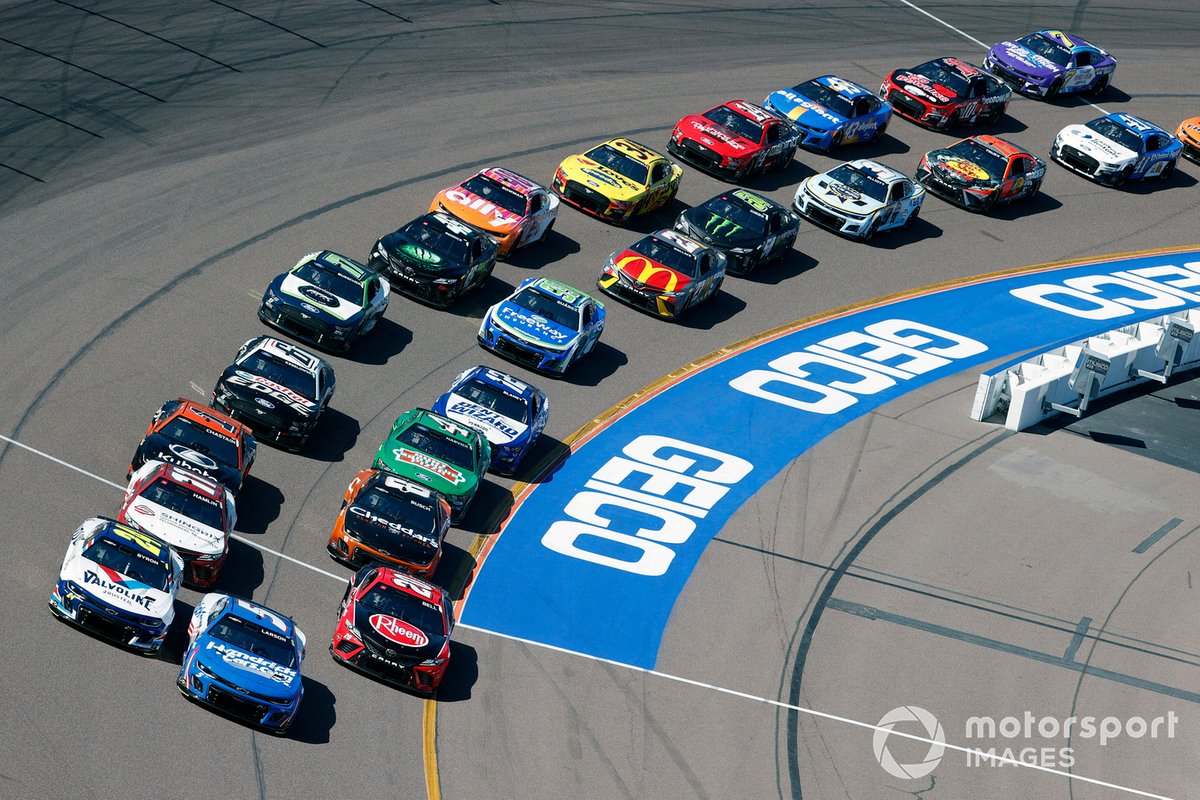
Sunday’s race served as the debut of NASCAR’s new aero rules this season for road courses and a majority of tracks measuring 1.058-mile or less in distance, including Phoenix.
The rules package, which was tested in the offseason at Phoenix, consists of a 2-inch spoiler and the removal of three diffuser strakes and engine panel strakes. The changes led to approximately 30-percent reduction in downforce.
It was visibly clear in the race the cars appeared more difficult to handle and slid around the track to a much greater degree than last season.
However, when it came cars’ ability to pass – especially in the front of the field – there was little noticeable change.
“I thought (the car) was really difficult to drive. Like from an objective standpoint, I know we were competitive, but I didn’t think we could pass any better,” said Byron, who rallied in overtime to win Sunday’s race, his second consecutive win.
“There’s still some work to do there with something going on with how tight they get in traffic. They were certainly hard to drive and I think that’s a good test to see who is the best out there (on the track).
“I think it just shows, like, guys were having to drive their cars and manage that. It made for a really difficult challenge inside the race car. How many times I slipped, how much slip was too much, how much was enough to keep going fast. That was a good challenge.”

The statistics pretty much backed up Byron’s observations.
Last spring at Phoenix, there were 14 official lead changes (counted at the start/finish line) among six different drivers. There were also eight cautions in the race.
On Sunday, there were 10 official lead changes among six drivers with five cautions in the event.
Last spring, NASCAR’s loop data registered 2,058 total green-flag passes throughout the field in the race, including 13 for the lead.
On Sunday, that same data registered 2,584 total green-flag passes throughout the field, including 14 for the lead.
Statistically, there was more passing in Sunday’s race but there was little to no change when it came to the number of drivers competing for the win.
Generally, one race isn’t an accurate measure of how the package could play out the remainder of the season.
But in this instance, the Cup Series’ championship race is held at Phoenix, so it can serve as a predictor of how the package could play out in November.
Byron noted, though, there is a lot of time between now and the end of the season and Cup teams will do a lot of work on the cars during that time.
“The cars are going to change a tremendous amount. I kind of keep that in the back of my mind,” he said. “As far as the balance goes, I thought we had the balance really good to start the race. I was sliding around a lot. Seemed to be sliding less than everybody else.
“Just when I got back in second, the dirty air is so significant, I just started to get tight. As soon as I was hung up in second, I just focused on trying to be consistent and maybe we get to lap traffic and something would happen.”
Asked how NASCAR should evaluate the success of the aero rules, Byron said, “I definitely think we need to kind of objectively look at was this a better race or not. That’s really what it comes down to.
“From my standpoint, yeah, it tests me a lot more, but there’s still some element we have to figure out with how tight the cars are. I think we’ll keep working through that.
“I’m open to anything. I just want us to have options as drivers. I want it to be hard to drive, but I also want to be able to pass.”







